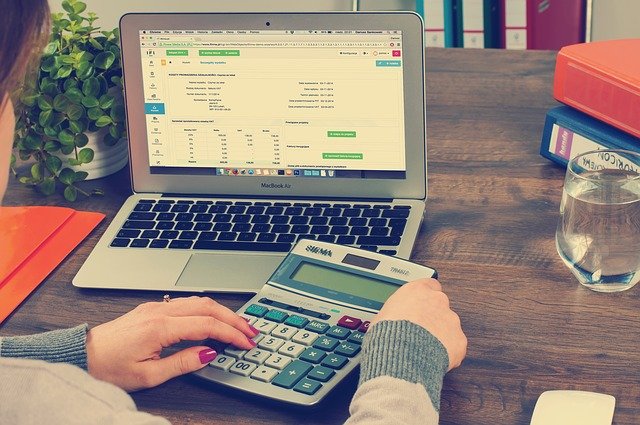Quickbooks make life easier whether you own your own business or are just looking to do individual taxes easily every year. The features provided help you keep track and manage your finances. If you have your own business, it helps it to run smoothly and offers insights on AP management. It can do cash flow projections and enhance vendor relationships. We’re going to walk you through some basics when it comes to entering bills into Quickbooks.
How to enter bills into QuickBooks Online

Image by Chris Pastrick from Pixabay
Once you’ve created an account and are on QuickBooks online, the tools make it easy. Before you enter your bills, you’ll need to set up business vendors first. You also need to set up products, services, and items that will sync with the bills. When you’ve completed the setup, you’ll notice many fields for entering a new bill. These should auto-populate with the products, services, and vendors that you’ve entered. It might take a bit of time but once you’ve done all this, the process for entering a bill is quick.
Create a new bill
- Click New and then under the supplier’s column, select Purchase Bill.
- Enter bill details in the relevant fields. Put in standard information unless you’ve customized the interface.
Bill details are like the information you would need if you were writing a check. This includes:
Vendor
Choose the vendor who sent you the bill. If you haven’t set up the vendor, you can do this now.
Bill date
Put in the invoice date seen on the bill. Enter in the actual invoice date as opposed to the day you got the bill.
Due date
The date calculated will be automatically based on the bill’s date and the terms of payment.
Bill number
Enter the invoice number on the bill you received from the vendor.
Category
Choose the category from the drop-down list. If the category doesn’t exist, create a new one.
Description
Add a brief description of the expense.
Tax
Check on the box if you want to collect sales tax when you bill a customer for an expense.
Amount
Fill in the amount or value of the bill.
Markup percentage
If you want to bill expenses to a customer, you can enter the markup percentage here.
Billable
You can check this option if you want to make the expense billable to your customers.
Product/Service
A purchase made by a customer needs to be mapped to an inventory item. Assign service items to services being billed to customers. You can select the product or service by choosing Add New to set up the new product or service. You can then select fields like the rate, description, tax, and other details that are related as necessary for your business.
Quantity
Enter the number of hours billed and products purchased.
Project/Customer
Select an existing project or customer or create a new project/customer.
Once you’ve filled in all the information, make sure to save your bill.
Review your bill
Go to the Vendor Center to verify the bill. Go to Expenses and select Vendors to see a list of suppliers. Find your vendor that’s related to the bill and check the open balance to see what the outstanding amount is. You should be able to see the bill you’ve just entered.
Entering Bills into QuickBooks Pro

Image by Gerd Altmann from Pixabay
Just a quick word about the QuickBooks Desktop Pro app. It’s just as easy to enter a bill and the process is quite similar. If you’re going to be your own personal bookkeeper, this is a good option. You’ll select your vendor or add a new one and then enter the payment terms. Choose the payment terms and discount rates if you have them. There will be options for the payment terms such as 1% 10 Net 30 or Due on receipt are a few examples. Fill in details, add any information to the memo and use the dropdown calendar to select the bill’s issue date. If you use a reference number, you can add it to the Reference number field. Enter the total amount that is due on the bill and a due date. Select the kind of bill (expenses and items). Save the bill from here. You can view the bills in the Bill Tracker area.
How to Import Bills into QuickBooks
You’ll use this function if you’re going to use Quickbooks instead of another bookkeeping program. You’ll also use this if there are a new batch of bills to enter into the system. This is a time-saving function that makes it easy and quick.
Prepare the File
You first need to prepare your Excel or CSV file with these fields:
- Bill number
- Vendor
- Bill date
- Due date
- Account
- Line amount
- Line tax code
You will also have to map each column header to the QuickBooks bill fields.
Upload the File
In setting, you’re going to select Import Data.
Once you see the fields, select Browse and find the excel or CSV file you want to import.
Select Open and then Next.
Mapping the Headers
The system will ask that you review column headers and map them to fields in the QuickBooks bill. Select date format and VAT options. Make sure to map VAT codes to those in QuickBooks and once you’ve done that, select Next. If there’s a problem with the mapping, these will be highlighted so you can go in and make changes as needed.
Completing the Import
QuickBooks is going to give you an import summary. Select Start Import to get the import process going. When it’s completed, you’ll see the status and can verify your bills have been successfully imported. When you’ve verified, select Done and then OK to complete the process.



